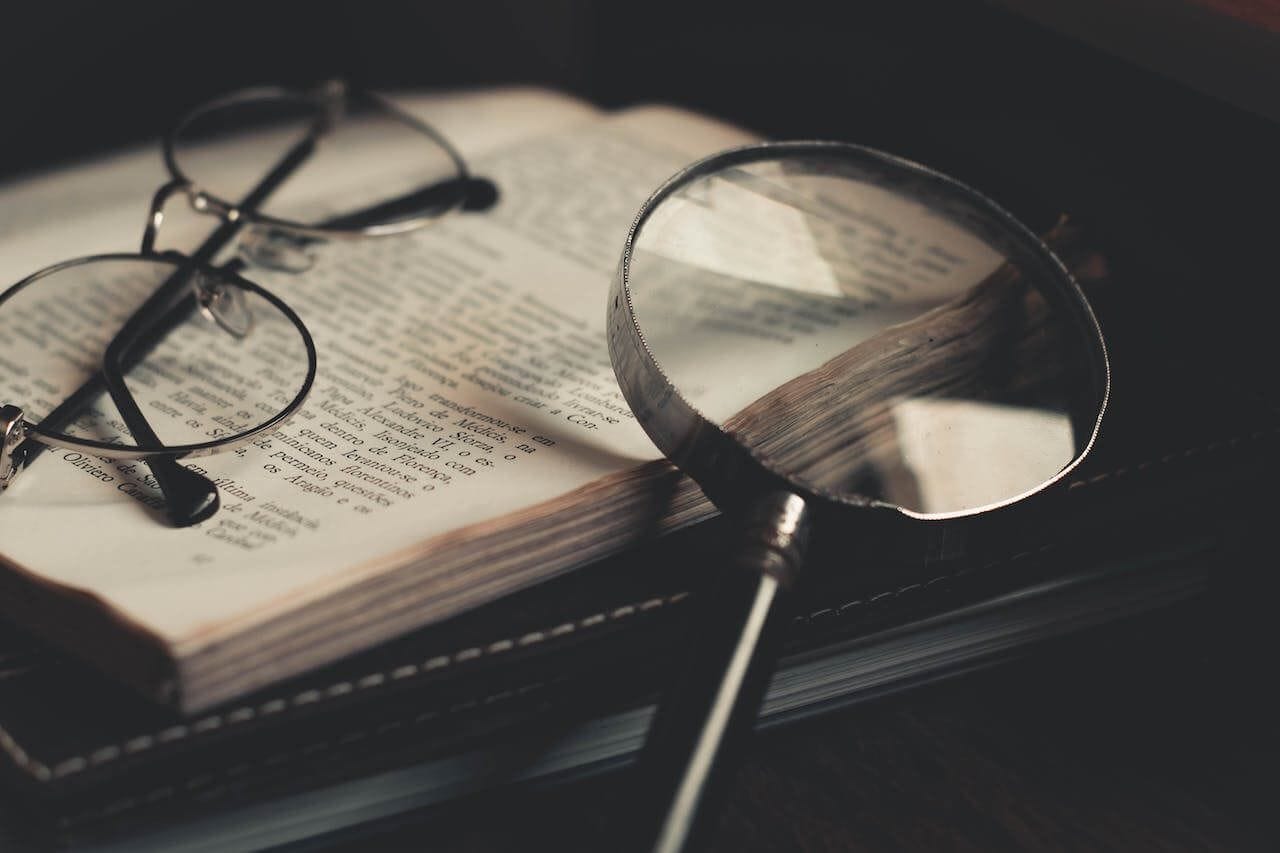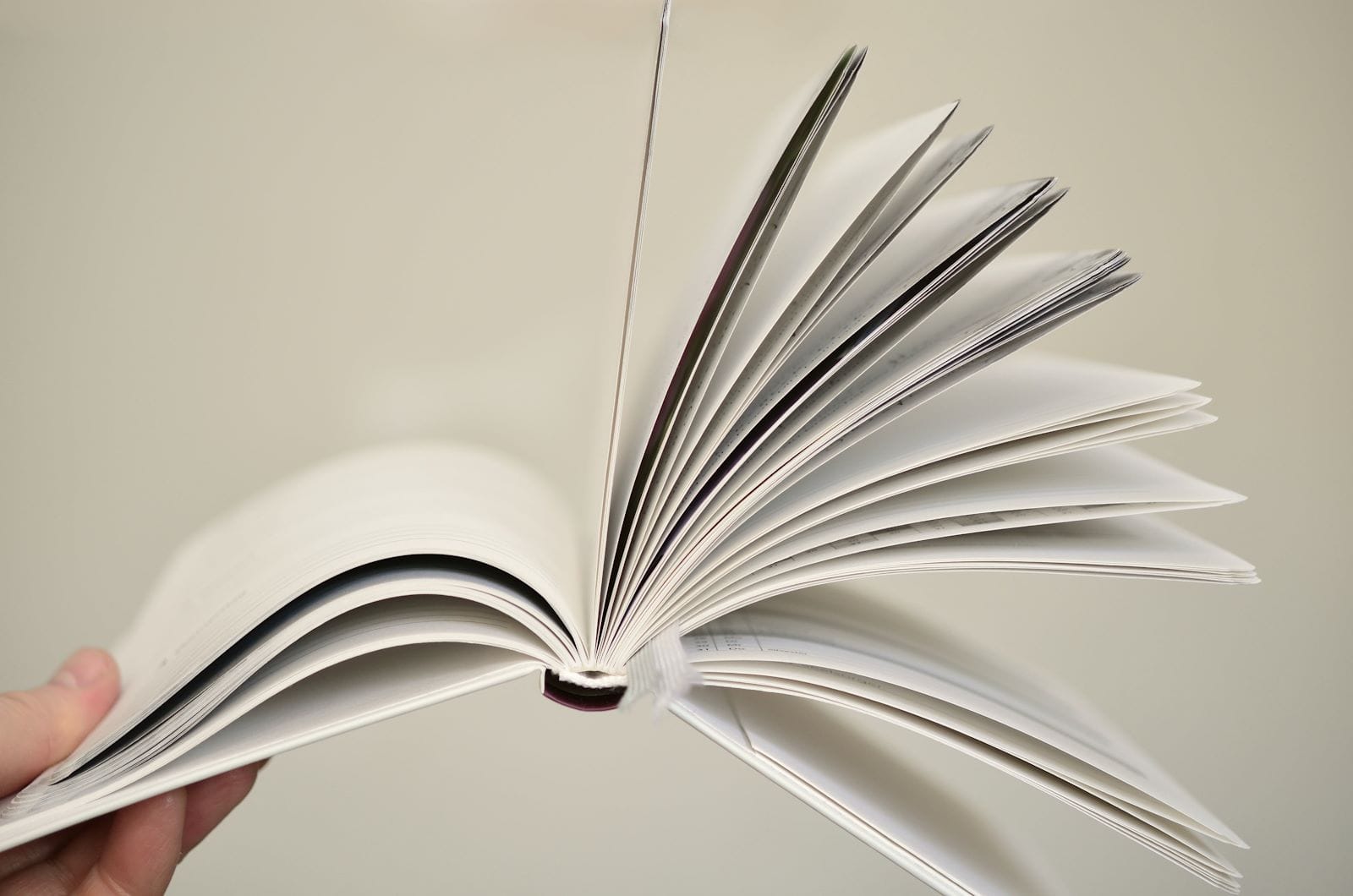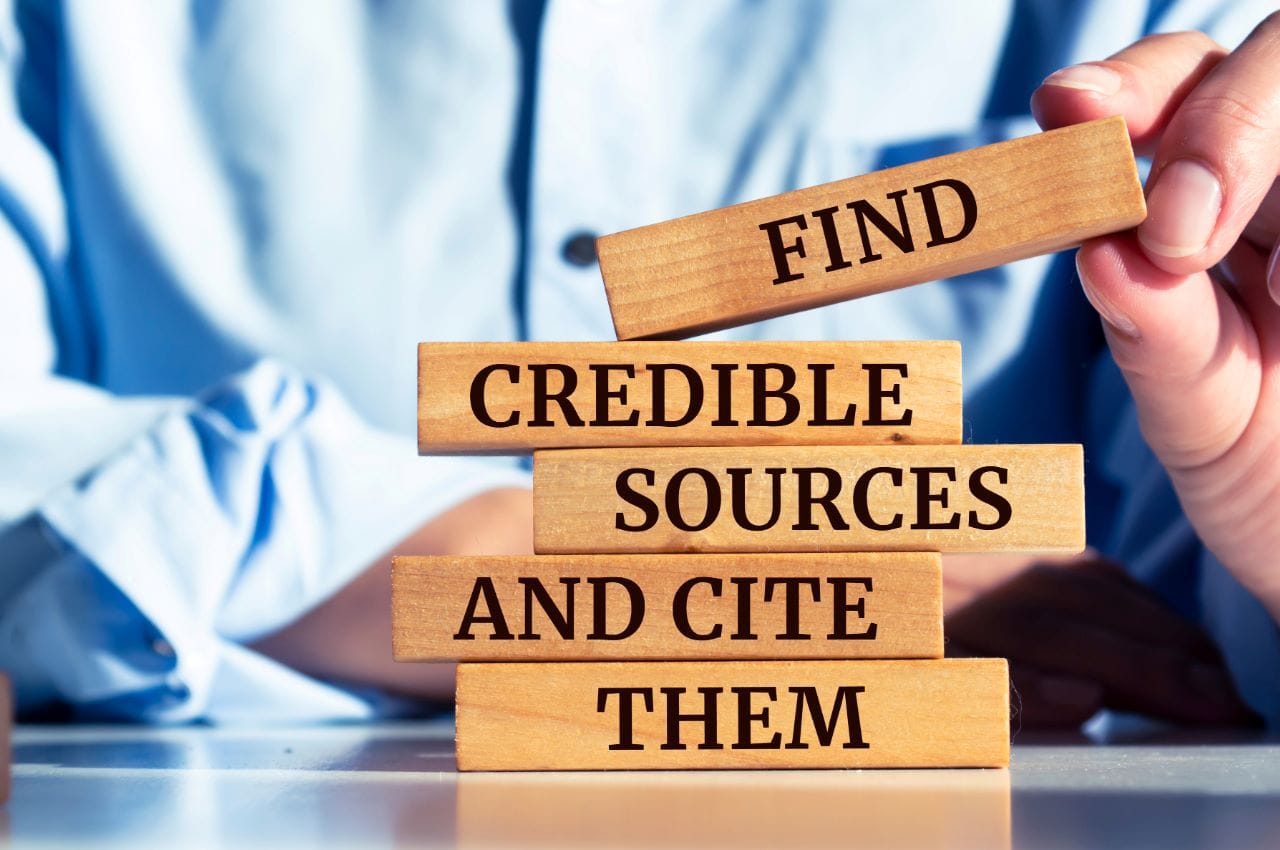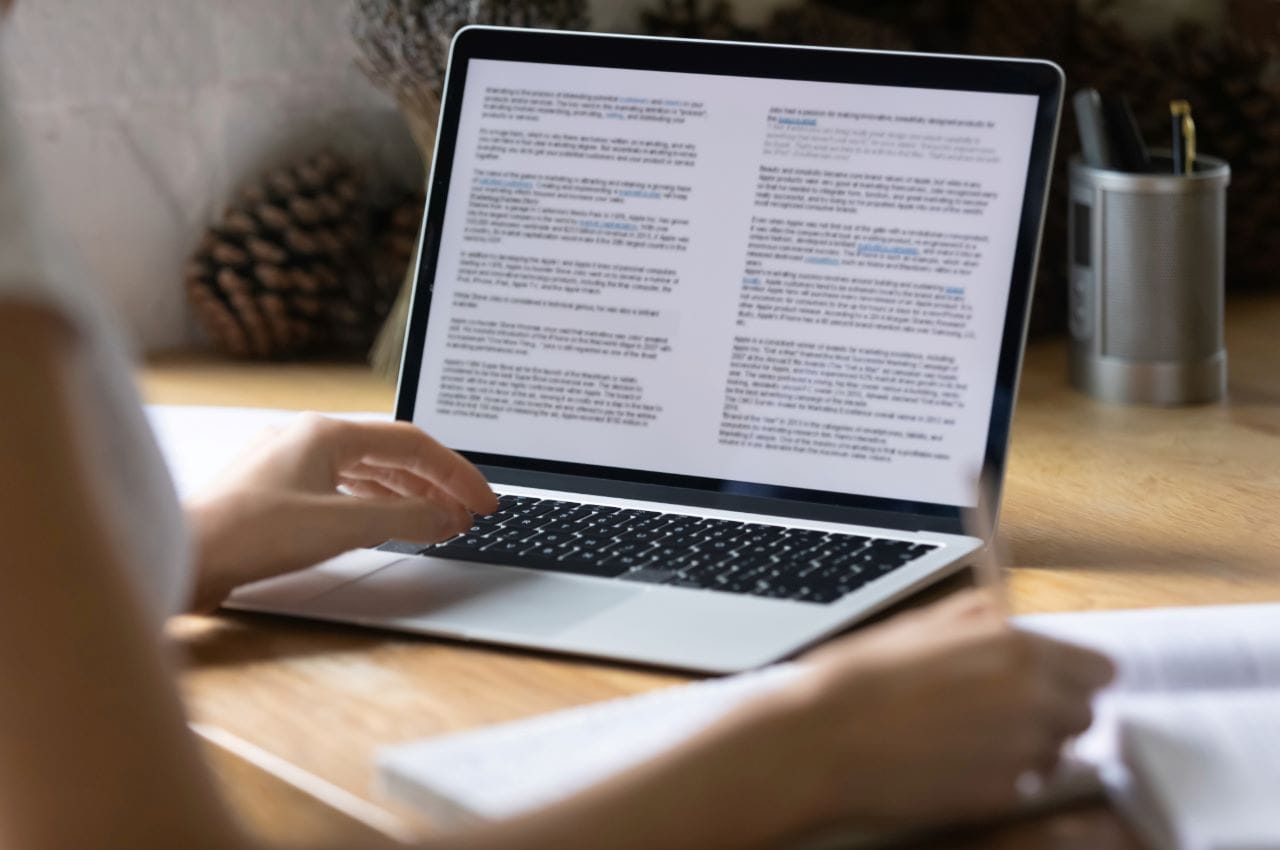How to Cite in Chicago Style

Not loving the citation guidelines? Here is the ally you need: The Chicago style. This set of rules for citing sources is a gateway to academic excellence. In this comprehensive guide, you will dominate one of the most widely used citation styles in the world of research and scholarship.
Save this blog and come back whenever you need it. This guide will explain the Chicago Style, its rules, and how to use it in all different sources. From books or academic journals to blog posts or even social media.
Get ready to elevate your writing, put sources into conversations just as your professors like, and join the ranks of serious scholars.
Elemental Chicago Style Manual
Whether crafting your first research paper or diving into deeper academic waters, understanding the Chicago style is crucial.
Using the Chicago style means learning the language of academic precision and respect. It's the backbone of innumerable research papers, theses, and scholarly articles. Chicago style mainly offers two systems for citing sources: the Notes and Bibliography and the Author-Date systems used in Humanities and Science:

1. For Humanities [Notes and Bibliography System]
Think literature, history, and the arts, and use brackets. Here, you use footnotes or endnotes to give credit to sources. Whenever you borrow an idea or a direct quote, you write a simple superscript number in your text just like this: [1].
The number between brackets leads to a note at the bottom of the page (called a footnote) or at the end of your paper (endnote, also called Bibliography) [2]. With these notes, you can give the reader the source or additional comments about the source.
Remember, at the end of your paper, you write a list with all the sources listing every source you've mentioned. This is called Bibliography.
Note: It's better practice to keep track and add the sources in the Bibliography as you include them. Start early. This way, you can save lots of time and have more opportunities to be creative and spend more time using free money for your education.
Here is a quick example of how it should look:
- In the paper you are writing: Recent news shows that College degrees are still highly valuable [1].
- In Bibliography: [1] Roberts, Stephanie. 2024. "The Impact of a College Degree." Journal of Social Science 11 (2): 123-321.

2. Science and Social Science (Author-Date System)
Preferred in the sciences and social sciences, and use parentheses. This system is about efficiency and clarity. Whenever you reference a source, you include the author's last name and the year of publication in parentheses right in your text. So, you need to use it if you write a sentence that uses an argument that is not yours or that supports your writing.
Here is a quick example of how it should look:
- In the paper you are writing: Recent news shows that College degrees are still highly valuable (Roberts 2024).
- In Bibliography: Roberts, Stephanie. 2024. "The Impact of a College Degree." Journal of Social Science 11 (2): 123-321.
In this example, the in-text citation ("Roberts 2024") specifies the source by the author's last name and the year of publication.
The bibliography entry provides complete information, including the title of the article (in quotation marks), the journal name, the page number of the volume (in this example, the number 11), the issue number, and the page range.
Get Matched to Thousands of Scholarships
Create your Bold.org profile to access thousands of exclusive scholarships, available only on Bold.org.
Create Free ProfileAnother Brief Example of a Model Essay
Each example shows how in-text references are made and correspond to the publication date in each system's bibliographic entries.
Humanities Example (Notes and Bibliography System)
Text from Essay:
- "Recent news shows that college degrees are still precious (Roberts 2024). The historical context of higher education highlights its evolving role in society (Mariada 2021). Moreover, cultural transformations in the perception of college education have been significant (Perez 2022)."
Bibliography:
- Roberts, Stephanie. 2024. "Education: A Perspective." Journal of Educational History 34, no. 1: 45-67.
- Mariada, Josephine. 2021. "Cultural Shifts." Cultural Studies Review 18, no. 3: 112-130.
- Perez, Francisco. 2022. "A College Degree." Journal of Social Science 11, no. 2: 123-321.
Sciences Example (Author-Date System)
Text from Essay:
- "Recent news shows that college degrees are still precious (Roberts 2024). Studies on the economic impact of higher education emphasize its importance (Mariana 2023). Additionally, the role of technological advancements in education has been explored extensively (Perez 2022)."
Reference List (Also called Bibliography or References):
- Roberts, Stephanie. 2024. "Technological Advancements in Education." Journal of Educational Technology 5 (4): 200-225.
- Mariada, Josephine. 2023. "Economic Result of Higher Education." Economics of Education Review 39: 50-75.
- Perez, Francisco. 2022. "The Effect of a College Degree." Journal of Social Science 11 (2): 123-321.
Start applying for scholarships! Thousands of applications are open for the upcoming school year!

How to Cite in Chicago Style
So far, we have talked about two major citation styles: the Notes and Bibliography system, a favorite in humanities, and the Author-Date system, preferred in sciences for its concise and direct approach.
Using CMOS is not just about making your work look good; it's about implanting it with credibility and respect for other scholars' work. Students and scholars must support academic integrity principles, such as avoiding plagiarism and correctly attributing sources, which are essential in scholarly and research settings.
If you want to delve deeper and learn everything about CMOS. In that case, you can visit the Chicago Manual of Style Online website.
Step-by-Step Guide to Formatting Your Bibliography
- Start at the End: Your Bibliography should appear at the end of your paper. It's a standalone section that lists all the sources you've cited.
- List in Alphabetical Order: Arrange all entries alphabetically by the author’s last name. If there's no author, alphabetize by the title of the work.
- Author Names: Begin each entry with the author's last name, followed by a comma and their first name. For example, "Smith, John."
- Titles: For books, italicize the title and follow it with a period. Place the title in quotation marks for journal articles and italicize the journal name.
- Publication Details: Next, include the publication details. For books, this is the place of publication, the publisher, and the year. For articles, include the journal volume, issue number, and the pages the article spans.
- Online Sources: For web-based sources, include the URL or DOI. Remember to add the date you accessed the material.
- Punctuation and Spacing: Pay attention to punctuation and spacing in each entry. Use periods to separate different parts of the entry, and ensure consistent use of spaces after each period.

All Types of Academic Writing Sources: Illustrated with Examples
Each type of source has specific requirements in Chicago style, ensuring that readers have enough information to locate and reference the material. Here, you have eighteen types of different sources you could use in your scholarly paper:
1. Citing Internet and Web Sources (Chicago Author-Date System)
In the digital era, students frequently spend significant time researching and citing internet and web sources, often the go-to sources. The Chicago Author-Date System offers a straightforward method to acknowledge these digital footprints in your academic work.
Let's explore how to bring the vast resources of the web into your research, with clear guidelines for citing everything from online articles to digital reports, ensuring that your citations are as clear and informative as the sources themselves.
Basic Format:
- Author Last Name, First Name. Year of Publication. "Title of Page/Article." Name of Website. URL.
Example:
- Patel, Ayesha. 2021. "Advancements in Renewable Energy." Green Innovations. https://www.example.com/renewable-energy.
Instructions:
- Include the author's name, the publication year, the page or article's title, the website's name, and the URL.
- If no author is listed, start the citation with the web page's title.
- The access date is only required if no publication or update date is available.
2. Citing Books (Chicago Notes and Bibliography System)
Books are the backbone of academic research. In the Chicago Notes and Bibliography System, citing books involves a meticulous process that respects this richness. This section will go into giving credit to authors and their valuable contributions, whether you're referencing a single chapter or an entire book.
- Basic Format for Footnote/Endnote:
- Author Last Name, First Name. Title of Book. Place of Publication: Publisher, Year of Publication.
- Example:
- Kim, Min-Joon. The Cultural Impact of Globalization. London: Global Press, 2020.
- Instructions:
- List the author's name, book title (italicized), place of publication, publisher, and publication year.
- For subsequent citations, use a shortened form: Kim, Cultural Impact of Globalization.
- In the Bibliography, list the author's name (Last Name, First Name), book title, place of publication, publisher, and year.
3. Citing Journal Articles (Chicago Author-Date System)
Using the Chicago Author-Date System, we can integrate journal articles and sources into our academic writing. From understanding issue numbers to accurately representing page ranges.
- Basic Format:
- Author Last Name, First Name. Year of Publication. "Title of Article." Journal Name Volume Number (Issue Number): Page Range.
- Example:
- Hernandez, Carlos. 2022. "Urban Planning and Community Development." Journal of Urban Studies 15 (3): 45-60.
- Instructions:
- Include the author's name, publication year, article title, journal name (italicized), volume and issue number, and page range.
- The in-text citation would be (Hernandez 2022), with a corresponding entry in the reference list.
4. Citing Interviews (Chicago Notes and Bibliography System)
Personal interviews can add a special and valuable viewpoint to your research. In the Chicago Notes and Bibliography System, citing interviews needs a distinct approach to catch their oral and often informal nature. These personal communications can go into your scholarly narrative, whether they were conducted personally, over the phone, or via email.
- Basic Format for Footnote/Endnote:
- Interviewee Last Name, First Name. Type of interview by Interviewer First Name Last Name. Date of Interview.
- Example:
- Singh, Raj. Interview by Maria Gomez. June 10, 2021.
- Instructions:
- Include the interviewee's name, the type of interview (e.g., personal, telephone, email), the interviewer's name, and the interview date.
- Interviews are typically cited in the notes only and not included in the Bibliography unless they are part of a published source title.

5. Citing Government Publications
Government reports show valuable data and insights into public policy. In the Chicago Notes and Bibliography System, citing these sources involves noting the publishing agency and report details. These documents lend authority to your arguments and provide essential data.
- Basic Format for Footnote/Endnote:
- Agency Name. Year of Publication. Title of Report. Place of Publication: Publisher.
- Example:
- United States Department of Health and Human Services. 2020. Annual Health Report. Washington, D.C.: Government Printing Office.
- Instructions:
- Include the government agency's name, the publication year, the report title (italicized), and publication details.
- Government publications are included in the bibliography in a similar format. Citing Conference Papers and Proceedings
6. Citing Conference Papers and Proceedings
Conference papers can present cutting-edge research and innovative ideas. When citing conference papers in the Chicago Notes and Bibliography System, it's essential to include details about the conference and the paper itself.
- Basic Format for Footnote/Endnote:
- Author Last Name, First Name. Year of Presentation. "Paper Title." Paper presented at Conference Name, Location, Date.
- Example:
- Chen, Li. 2021. "Sustainable Urban Development." Paper presented at the International Conference on Environmental Science, Beijing, China, March 15, 2021.
- Instructions:
- List the author, year, paper title in quotation marks, conference name, location, and date of the presentation.
- Include similar details in the bibliography.
7. Citing Theses and Dissertations
Theses and dissertations represent in-depth research on specific topics. In Chicago style, these academic works are cited with details about the institution and the year of completion.
- Basic Format for Footnote/Endnote:
- Author Last Name, First Name. Year of Completion. "Title of Thesis." Degree, Institution.
- Example:
- Kumar, Rakesh. 2022. "Effects of Climate Change on Marine Biodiversity." PhD diss., University of Miami.
- Instructions:
- Include the author's name, year of completion, title of the thesis (in quotation marks), type of degree, and the institution.
- In the bibliography, use a similar format, omitting the type of thesis (e.g., PhD diss.).
8. Citing Legal and Legislative Materials
Legal and legislative materials are foundational in legal studies and policy research. Chicago style provides a system for citing these sources, including cases, statutes, and legislative documents.
- Basic Format for Footnote/Endnote:
- Name of Act or Case. Year. Volume Number. Name of Source. Page number.
- Example:
- Brown v. Board of Education. 1954. 347. US Reports. 483.
- Instructions:
- For cases, include the case name, year, volume number, source, and page number.
- For statutes, provide the name of the statute, the code, and the section number.
- In the bibliography, legal and legislative materials are formatted similarly, often with additional publication details.

9. Citing Archival Sources
Archival sources, such as letters and manuscripts, are treasures of historical research. Chicago style requires specific details for these unique sources.
- Basic Format for Footnote/Endnote:
- Author Last Name, First Name. "Title or Description of the Item." Date. Collection Name, Box and Folder Number, Repository Name, Location.
- Example:
- Ngugi, Amina. "Letter to James Okello." April 5, 1965. Independence Movement Papers, Box 4, Folder 7, National Archives, Nairobi, Kenya.
- Instructions:
- Include the author's name, a description or title of the item, date, collection name, box and folder number, repository name, and location.
- Archival sources are typically not included in the bibliography but are cited in notes only.
10. Citing Audiovisual Materials
Audiovisual materials like films and documentaries can add a dynamic element to your research. In the Chicago style, these sources are cited with details about the title and production.
- Basic Format for Footnote/Endnote:
- Title. Directed by Director's First Name Last Name. Release Year. Format.
- Example:
- The Journey. Directed by Fatima Al-Hassan. 2019. DVD.
- Instructions:
- Include the title (italicized), director's name, release year, and format (e.g., DVD, streaming).
- In the bibliography, include additional details like production company and distribution details.
11. Citing Social Media Posts and Blogs
Social media posts and blogs are increasingly relevant in contemporary research. Chicago style allows for the citation of these digital sources with specific details.
- Basic Format for Footnote/Endnote:
- Author Last Name, First Name (or Username). "Content of the post up to the first 160 characters." Name of Platform, Date of Post. URL.
- Example:
- Lee, Jin-soo (@jinsoolee). "Excited to share my latest blog post on urban sustainability..." Twitter, June 15, 2021. https://twitter.com/example/post12345.
- Instructions:
- Include the author's name or username, a portion of the post content, the platform name, the date of the post, and the URL.
- Social media citations are generally included in notes only and not in the bibliography.

12. Citing Artworks and Exhibitions
Artworks and exhibitions can provide a visual dimension to your research. In Chicago style, these sources are cited with details about the artist, title, and location.
- Basic Format for Footnote/Endnote:
- Artist Last Name, First Name. Title of Artwork. Year. Medium, Museum or Gallery, Location.
- Example:
- Hernandez, Diego. Vibrant Streets. 2020. Oil on canvas, Modern Art Museum, Bogota, Colombia.
- Instructions:
- Include the artist's name, title of the artwork (italicized), year, medium, and location (museum or gallery and city).
- In the bibliography, list artworks in a similar format, often omitting the medium.
13. Citing Patents
Patents are essential documents in research related to inventions and technology. Chicago style provides a format for citing patents, including the inventor and patent details.
- Basic Format for Footnote/Endnote:
- Inventor Last Name, First Name. "Title of Patent." Patent Number, Date of Patent.
- Example:
- Chaudhary, Anil. "Wireless Charging Device." US Patent 9876543, issued April 4, 2021.
- Instructions:
- Include the inventor's name, title of the patent, patent number, and date of issue.
- In the bibliography, patents are listed in a similar format, sometimes including additional details like the country of patent.
14. Citing Maps and Cartographic Materials
Maps and cartographic materials provide geographical context and data. The Chicago style outlines how to cite these materials with information about the creator and publication.
- Basic Format for Footnote/Endnote:
- Creator Last Name, First Name. Title of Map. Year. Format/Type, Publisher, Location.
- Example:
- Kim, Yeon-Su. Map of Ancient Silk Roads. 2018. Digital map, Map Publishers Ltd., Seoul.
- Instructions:
- Include the creator's name, title of the map (italicized), year, type or format, publisher, and location.
- In the bibliography, list maps with the same format, providing full publication details.
15. Citing Personal Communication
Personal communications like emails and letters offer unique insights and information. Chicago style cites these sources in a way that respects their personal nature.
- Basic Format for Footnote/Endnote:
- Communicator Last Name, First Name. Type of Communication, Date.
- Example:
- Wang, Mei. Email to the author, May 5, 2021.
- Instructions:
- Include the communicator's name, type of communication (e.g., email, letter), and the date of communication.
- Personal communications are generally cited in notes only and not included in the bibliography.

16. Citing Reviews
Reviews provide critical perspectives on various media and works. In Chicago style, reviews are cited with details about the review itself and the work being reviewed.
- Basic Format for Footnote/Endnote:
- Reviewer Last Name, First Name. Review of Title of Work, by Creator's First Name Last Name. Publication Title, Date of Review, Page number or URL.
- Example:
- Gupta, Rajesh. Review of Modern Economic Theories, by Sunita Narayan. Economic Journal, July 10, 2021, 23-24.
- Instructions:
- Include the reviewer's name, title of the work being reviewed (italicized), creator of the work, title of the publication (italicized), date of the review, and page number or URL.
- In the bibliography, include similar details, ensuring proper formatting and completeness.
17. Citing E-books and Online Texts (Chicago Notes and Bibliography System)
- Basic Format for Footnote/Endnote: Author Last Name, First Name. Title of Book. Edition. Place of Publication: Publisher, Year. Format/Platform. Example: Johnson, Imani. The World of Digital Art. 2nd ed. New York: ArtPress, 2021. Kindle. Instructions: Include the author's name, book title, edition (if applicable), place of publication, publisher, year, and the format or platform.
18. Citing Databases and Online Archives (Chicago Notes and Bibliography System)
- Basic Format for Footnote/Endnote: "Title of Item." Database Name. URL.Example:"18th Century Political Manuscripts." World History Archive. https://www.example.com.
Navigating the diverse requirements of Chicago Style Citations can seem daunting, but with practice, it becomes an integral and effortless part of academic writing.
Whether you're citing books, journal articles, web sources, or personal interviews, the key is attention to detail and consistency. By adhering to the Chicago Manual of Style, you guarantee that your work is credible and well-researched and establish respect for the intellectual contributions of others in your field. Remember, adequate citation is not just a requirement but an ethical imperative in academic and scholarly communication.

Frequently Asked Questions About Chicago Style Citations
When should I use the Notes and Bibliography system over the Author-Date system?
The Notes and Bibliography system is normally used in humanities (like literature, history, and arts), where detailed footnotes are beneficial. The Author-Date system is preferred in sciences and social sciences for its straightforward parenthetical referencing.
How do I cite a source with no author in Chicago style?
If a source has no author, start the citation with the title of the work. In the bibliography, alphabetize the entry by the first significant word of the title.
Can I use abbreviations in Chicago style citations?
Yes, common abbreviations (like et al. for multiple authors) are acceptable in Chicago style. However, ensure they are used consistently throughout your work.
How do I cite a website without a publication date in Chicago style?
If a web source lacks a publication date, use the access date instead, along with the URL in your citation.
What's the difference between a bibliography and a reference list in Chicago style?
A bibliography includes all sources consulted in your research. In contrast, a reference list only includes sources you specifically cited in your text.
Join Bold.org, and find no-hassle scholarships and tips that help you on your college journey!